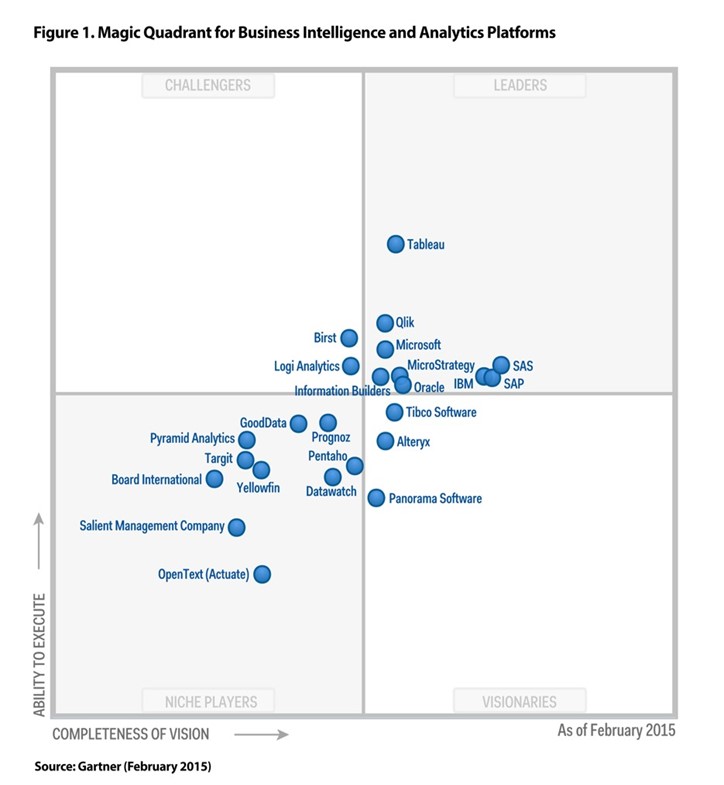About Gartner Magic Quadrant 2015 for BI
The 2005 Gartner Magic Quadrant is out and according to Gartner, the distance between Tableau and the other leaders is widening. Here is the full report. It’s obvious that Gartner focuses only on the self-service aspect of BI and throws away the entire gamut of tools required to deliver successful BI solutions, including RDBMS, ETL, data models, MDM, etc. But even if we focus on self-service BI, I don’t quite agree with Gartner’s infatuation with Tableau (see my blog “Top 10 Reasons for Choosing Microsoft Self-service BI”). It’s a good visualization tool but based on what I hear, people tend to overestimate its capabilities and get in trouble. Nevertheless, for the most part I agree with the Gartner’s assessment related to Microsoft BI cautions, except:
1. “Microsoft had the highest percentage of customer references citing absent or weak functionality (for example, no drill-through capabilities in Power View) as a platform problem.”
Really? The other vendors have more functionality? Can Tableau import multiple datasets, transform data, have Q&A, scale, share and discover datasets, or have data governance? And, that percentage is probably high, because the percentage of customers using Microsoft BI is high.
2. “However, customers may have difficulty finding external resources with experience in the newer Power BI stack, which requires a different set of skills and expertise than Microsoft’s sweet spot of systems-of-record, developer-focused BI deployments.”
The Power BI stack shouldn’t require that much knowledge.
A successful BI strategy should be much more than just “putting lipstick on a pig”. No matter how nice the lipstick is, it’s still a pig. However, the Gartner’s summary of the Microsoft weaknesses is spot on:
“Microsoft is attempting to address many of these limitations in the forthcoming stand-alone version of Power BI, which does not require Office 2013 or an Office 365 subscription and can access Analysis Services structures and content without physically moving underlying enterprise data to the cloud.”
I’m looking forward to the 2016 quadrant. For now, I like better the Forester Research report (http://www.forrester.com/pimages/rws/reprints/document/115485/oid/1-RN6A25).





